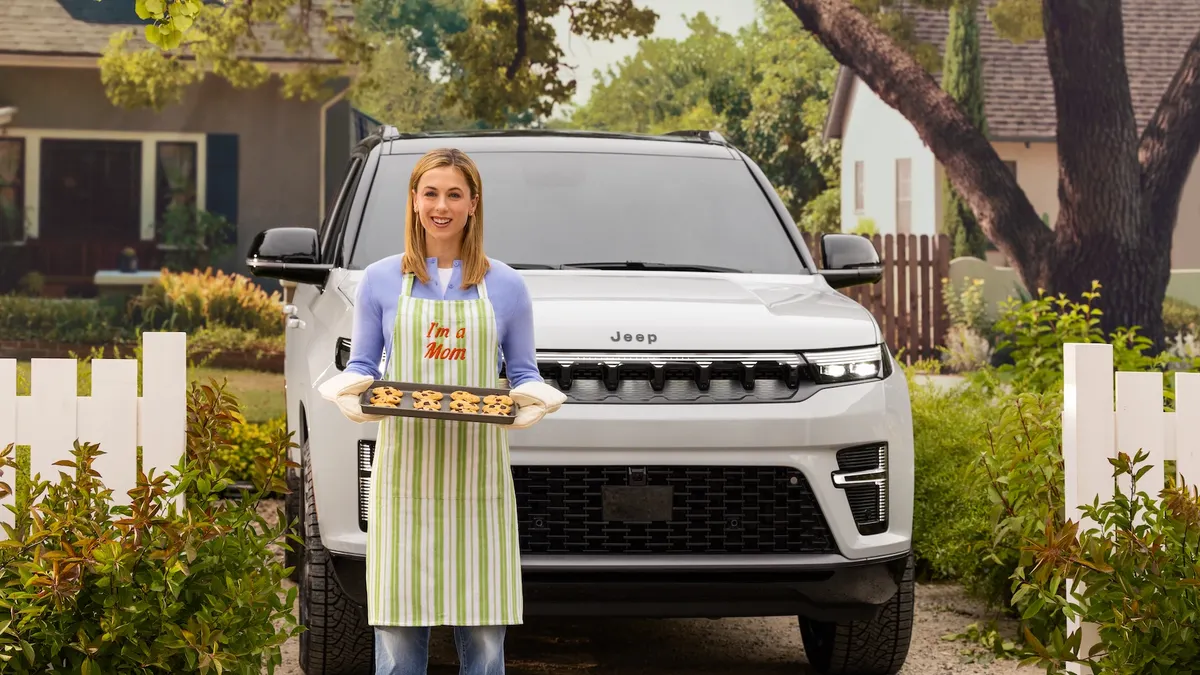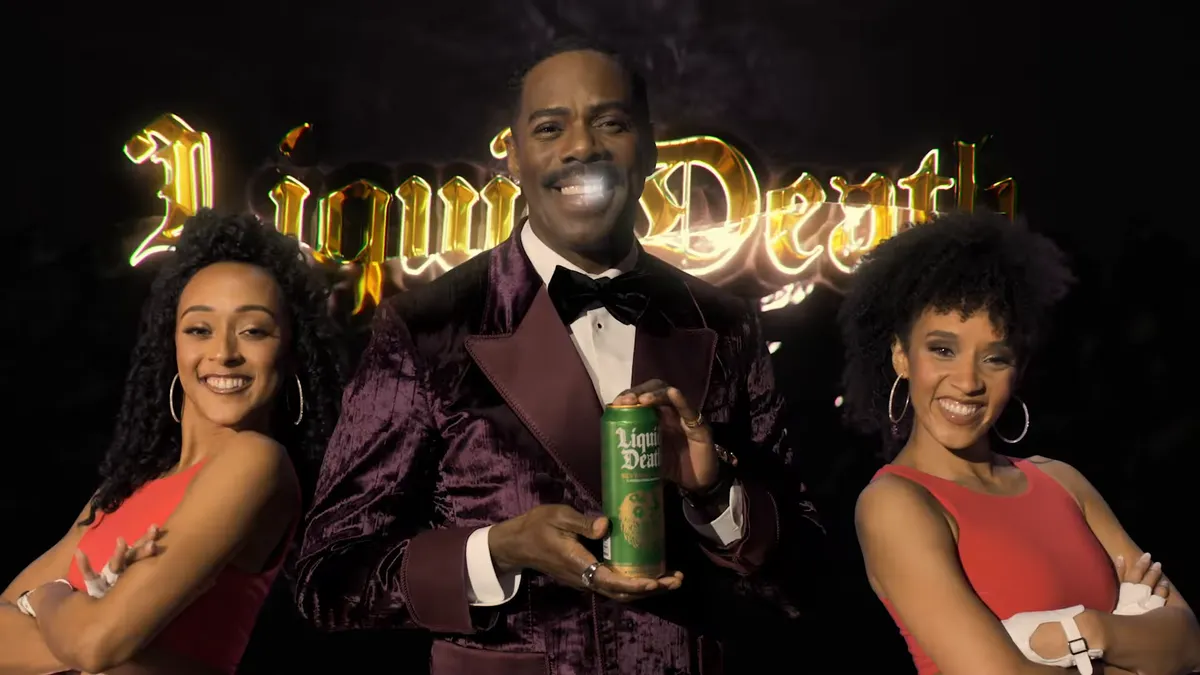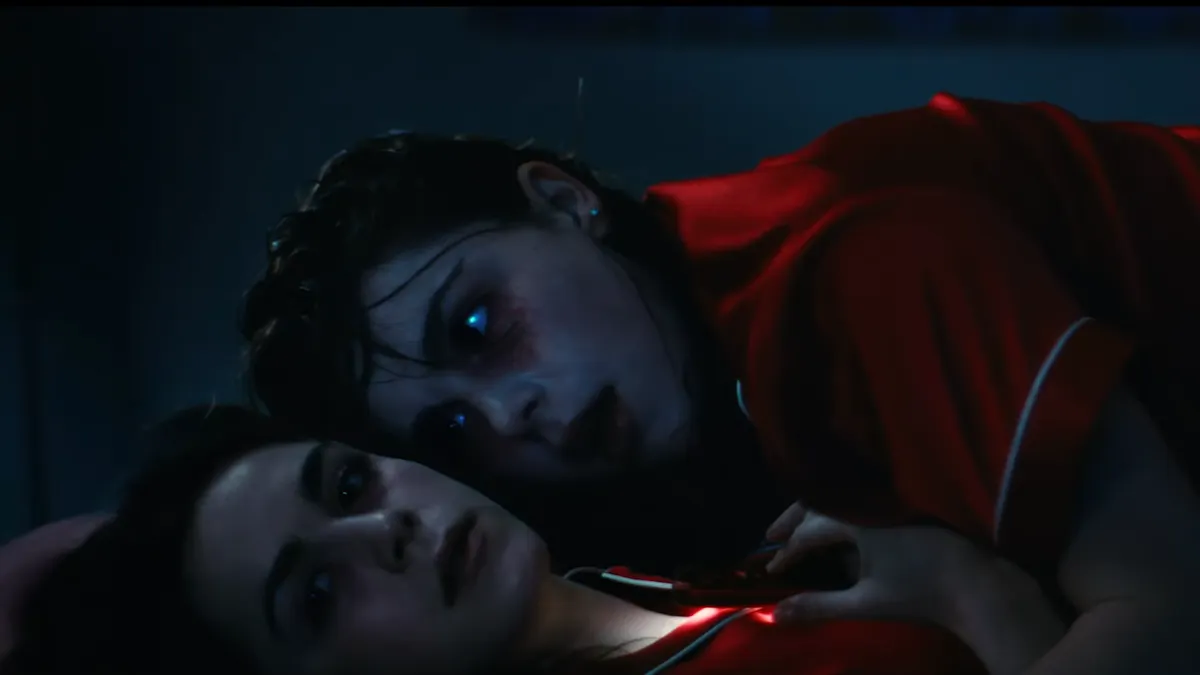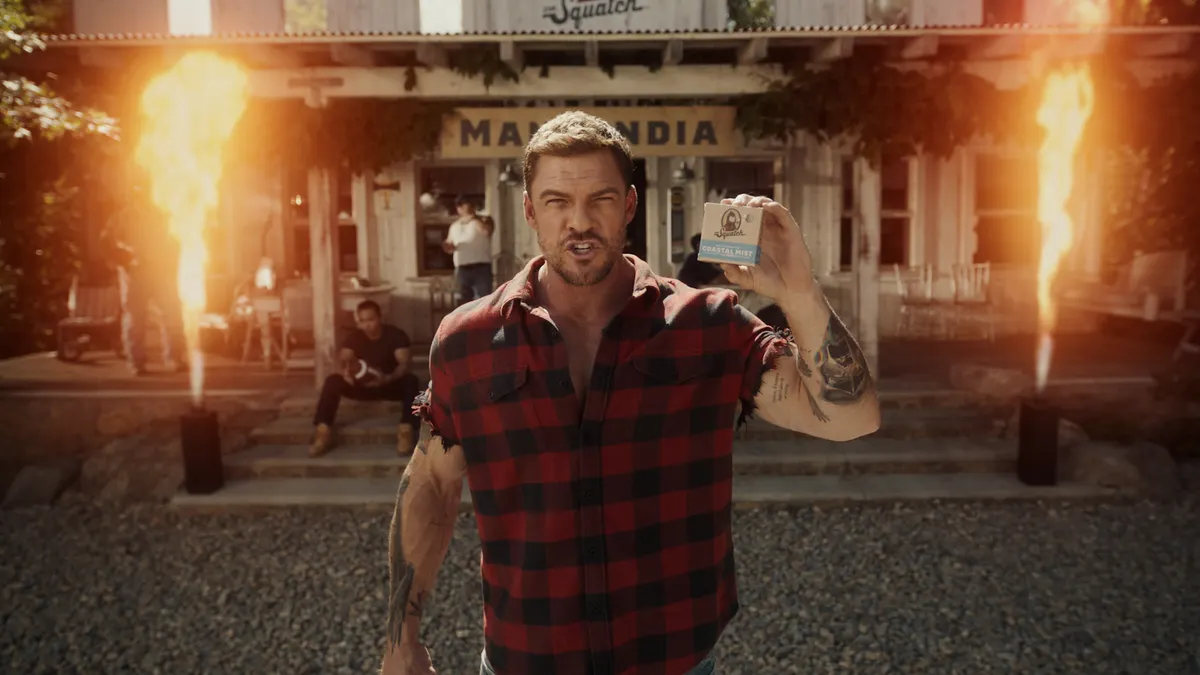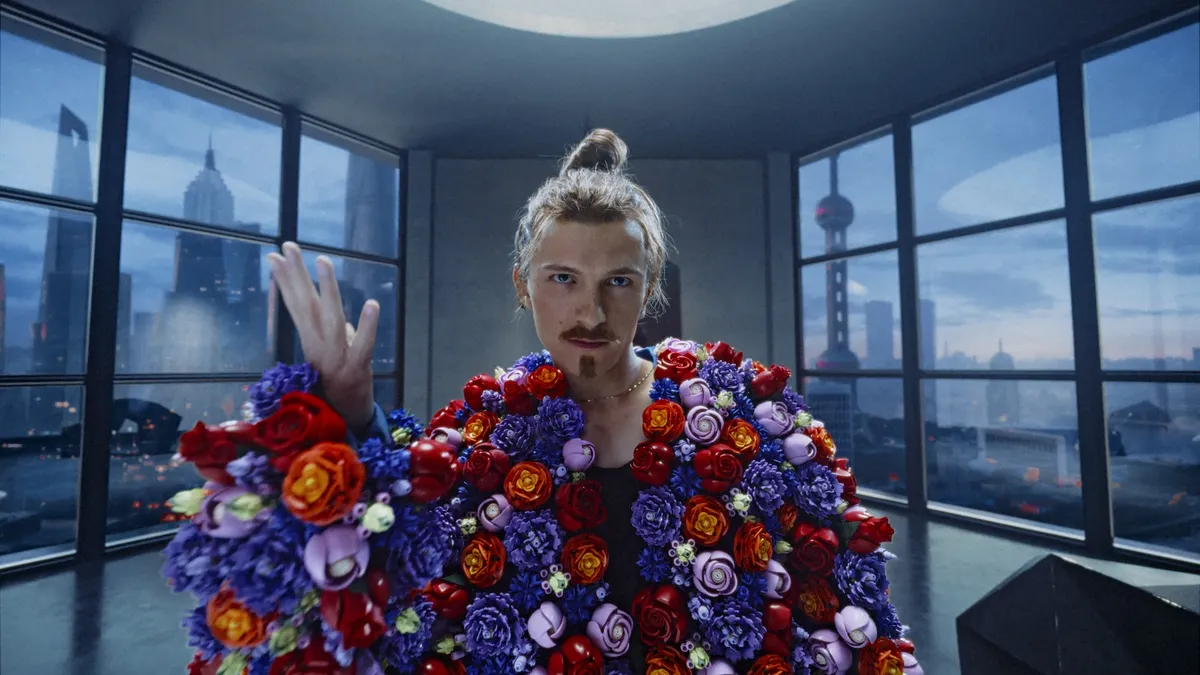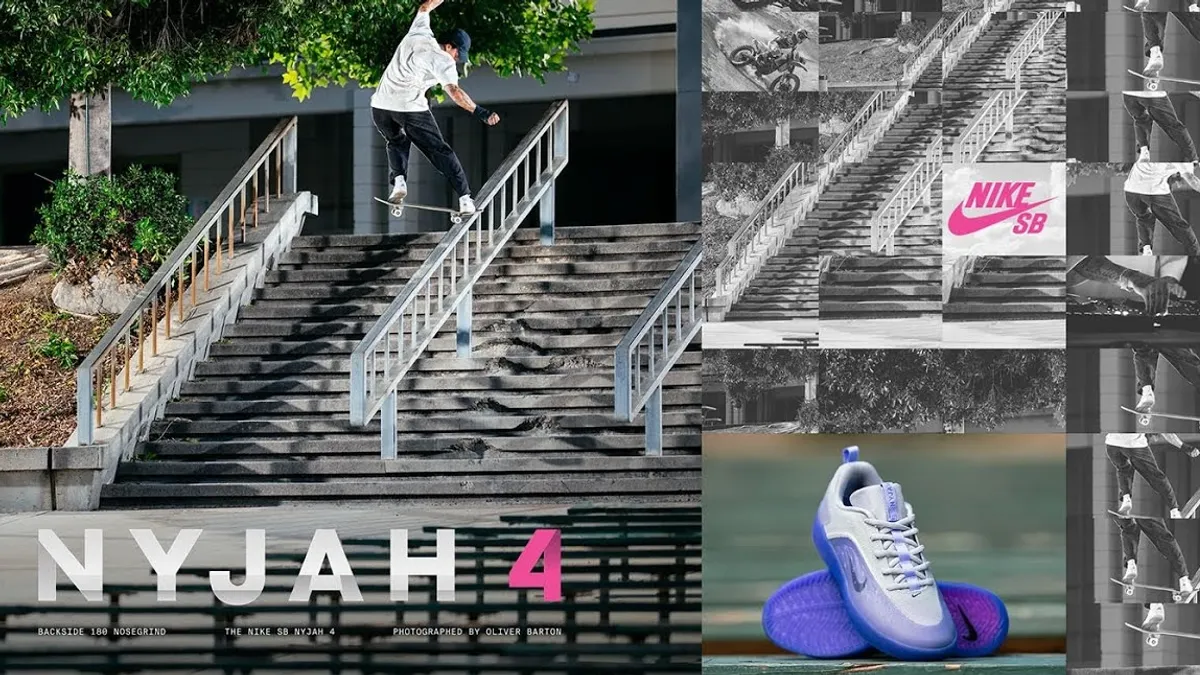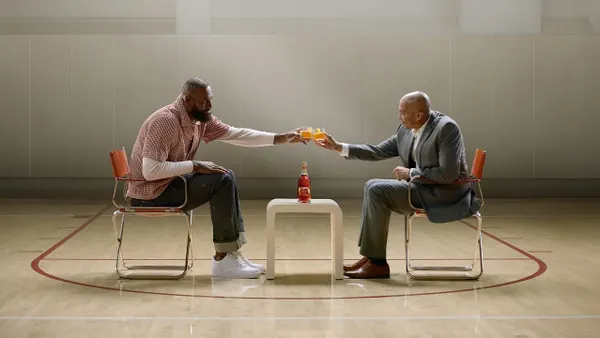Campaign Trail is our look at some of the best and worst new creative efforts from the marketing world.
This week, Marketing Dive's editors review the strategies brands are using to target men, dog lovers and several ethnic groups in recent efforts.
Gillette tries to give the Justice League a clean shave
The rundown: Warner Bros. Pictures's "Justice League" hits theaters Nov. 17, and Gillette is partnering with the blockbuster for some super-themed marketing. Beyond featuring the ensemble on its packaging and specialized gift packages, the Procter & Gamble brand has released a minute-long video short detailing how its R&D team worked hard to carefully craft razors that are the right fit for any man: From the Flash, who needs to shave at lightning-fast speeds without getting razor burn, to underwater Atlanteans like Aquaman who, as played by Jason Mamoa, is not especially well-shaven.
Extending the experience beyond the spot, Gillette has also produced exclusive virtual reality (VR) content for mobile. Available for free on Apple's App Store and Google Play, each VR experience places users in the shoes — or super suits — of one of the five members of the Justice League, including Batman, Wonder Woman, The Flash, Aquaman and Cyborg.
The results: If there's a flaw in Gillette's "Justice League" push, it's that the macho brand — whose tagline has long been "The Best a Man Can Get" — can't really play up the best character. Gal Gadot's Wonder Woman, despite being the new crown jewel of DC's cinematic universe from a critical and box office standpoint, doesn't get much of a nod in the main spot, though she is part of the VR experience and featured, albeit less prominently, on the holiday-ready special gift packages.
That's not to downplay what works: The ad, which shows shaving specialists endangering themselves to perfect a razor blade that's fit for heroes, wins some laughs.
VR has lost a little bit of this luster this year under the shadow of its sister technology, augmented reality, but the "Justice League" mobile offerings demonstrate how marketers can tie their brands to entertainment properties that have built-in narratives and characters that will inevitably draw fan interest. Sony Pictures, ahead of the release of "Spider-Man: Homecoming" this summer, teamed with Dell for a similar experience that let users play around as the web-slinger.
—Peter Adams
Pedigree pushes adoptable pooches with Facebook masks
The rundown: Who knew the overused dog selfie lens on social media could save canine lives? On Monday, dog food brand Pedigree tapped the selfie trend and unveiled a Facebook mask feature to help shelter dogs find new homes. For the latest effort of the Mars-owned brand's "Feed the Good" campaign, users can tap Facebook's camera app and overlay a selfie with virtual cartoon filters of cute pit bulls, labradors, yorkies, huskies and other breeds Pedigree says are all too common in shelters.
Another interactive layer to the "Adoptable Mask" is that when users nod, information curated by PetSmart-owned AllPaws about local shelters' adoptable pooches pop up — particularly poignant since October is National Adopt a Shelter Dog Month.
The results: While the mobile feature by agency BBDO New York is both fun and functional, it was clearly designed to spur user-generated social content. The video that accompanies the Facebook mask has also reeled in more than 5,000 hits on YouTube.
This effort builds on previous work by BBDO and Pedigree to drive home one of the brand's core values of supporting pet adoption. In April, the duo took a "flip the script" approach in a video where humans were the ones in cages pining to be picked for a new home. And, in 2015, they debuted a four-minute clip about former inmates who turned their lives around once they adopted a dog — a message of how rescues often "save" their owners as much as their owners saved them. Talk about pulling on the heartstrings.
—Natalie Koltun
Toyota takes narrow and broad targeting approach in Camry ads
The rundown: Toyota's campaign for the 2018 Camry made a splash when it launched last month thanks to its use of customized emoji videos, use of ASMR and interactive ads. The effort is now getting attention from The New York Times in a piece about the campaign's wide variety of TV spots, some narrowly targeting specific ethnic groups while others try for a mainstream transcultural appeal.
The ads meant for African-American, Hispanic or Asian-American audiences were developed using cultural insights to inform casting, music and thematic choices intended to resonate with each group and appear around TV programming that skews heavily toward specific audiences. Four agencies were used, three specializing in one of the ethnic groups, along with a general agency. Each ad is built around a specific emotion, such as thrill, indulge, wonder and being captivated.
The results: Toyota's approach suggests consumers are looking for brands to talk to them directly while also wanting brands to reflect the transcultural reality of life in America. The ads targeted at specific ethnic groups use themes designed to elicit an emotional response with that audience. For example, an ad featuring a Asian-American man picking up his daughter from softball practice intends to reflect the affectionate side of Asian-American fathers, per The New York Times.
Consumers are quick to call out brands when ads come across as culturally insensitive or racist and, so far, Toyota does not appear to have fun afoul of viewers. Dove didn't fare as well earlier this week when it had to pull an entire campaign following backlash over an ad on Facebook that appeared to depict a black woman turning into a white woman and then morphing into an Asian woman. What both the Toyota and Dove's efforts demonstrate is that marketers need to tread carefully when employing demographic targeting.
Toyota invested in a wide range of creative to cover all the bases while Dove, which insists its message was misconstrued, may have been tripped up the demand for brevity in digital ads and ill-advised edits to the longer creative that resulted in delivering an unintended message. In the not too distant future, more brands may be forced to eschew demographic targeting all together in order to connect with Gen Z, whose views on inclusivity may demand an approach more focused on needs or behavior.
—Chantal Tode





